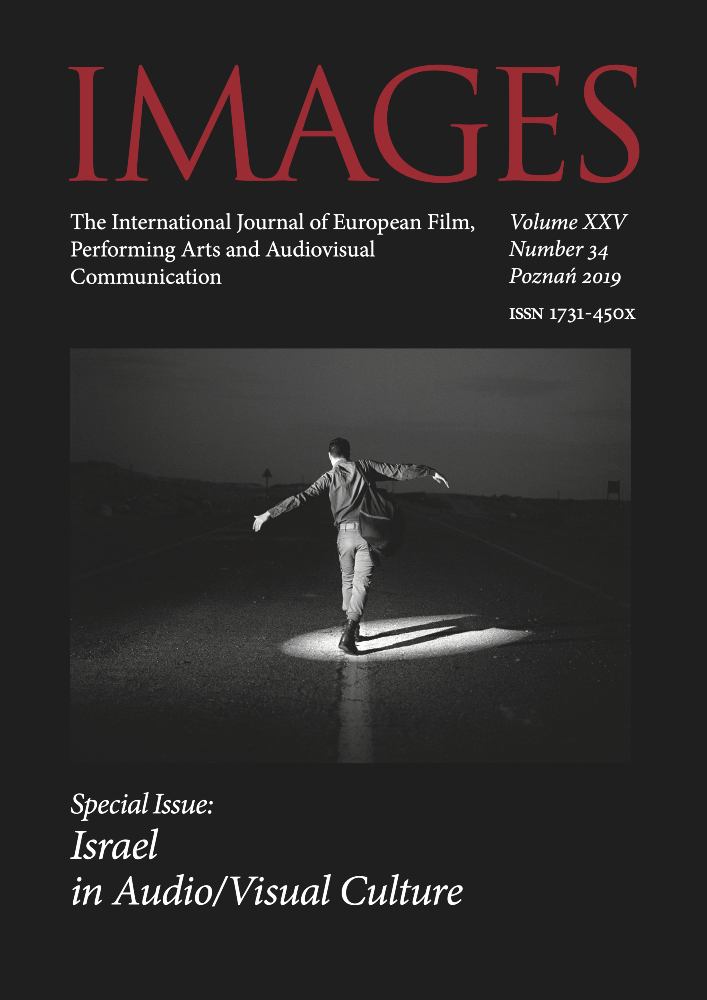Abstrakt
Abstract. Avisar Ilan, The national and the popular in Israeli cinema. “Images” vol. XXV, no. 34. Poznań 2019. Adam Mickiewicz University Press. Pp. 29–44. ISSN 1731-450X. DOI 10.14746/i.2019.34.02.
The article examines Israeli cinema as a critical participant in the local drama of national ideology and national identity. Israeli filmmakers have engaged in enunciating the national culture, in the context of the medium’s history, political ideologies, and the tension between high art and popular culture. The historical review of Israeli films shows dramatic changes over the years from nationalistic propaganda to radical critique and post-Zionism. Israeli cinema appears now to seek a constructive and fruitful dialogue with the viewers. In the recent wave of popular films, the national ideology is more conscious of its past mistakes and inherent deficiencies; its presentation of national identity is less narrow and more open to alternative types, thereby suggesting new vistas of national culture
Bibliografia
Avisar I., Israeli cinema and the ending of Zionism, [in:] Israel in the Nineties, eds F. Lazin, G. Mahler, Gainesville 1996
Avisar I., Visions of Israel: Israeli Filmmakers and Images of the Jewish State, The Jewish Media Fund, c/o Charles H. Revson Foundation, New York 1997 [Second, revised edition, 2002]
Avisar I., The Israeli Scene: Language, Cinema, and Discourse (in Hebrew), Ramot 2005
Avisar I., The Israeli scene – political criticism and the politics of anti-zionism, [in:] Resurgent Antisemitism, ed. H. Alvin Rosenfeld, Bloomington, 2013, pp. 362–381
Avisar I., The Holocaust in Israeli cinema as a conflict of survival and morality, [in:] Identities in Motion, eds M. Talmon, Y. Peleg, Austin 2011, pp. 151–168
Avisar I., Dancing Solo in the Lebanese Mud, (review of “Waltz with Bashir”, 2008) [in] The Wandering View: Modern Jewish Experiences in World Cinema, ed. L. Baron, Lebanon 2011, pp. 358–365
Benedict Anderson, 2nd ed. London 1983
Birch A., Nationalism and National Integration, London 1989
Burgoyne R., Film Nation: Hollywood Looks at U.S. History, Minneapolis 1997
Dyer R., McDonald P., Stars, London 1998
Edelsten E., Self-Hatred in the Guise of Political Message, “Maariv” 1986, February 11
Everard J., Virtual States: The Internet and the Boundaries of the Nation State, London 2000
Fainaru D., Inside story, “Sight and Sound, Maps and Dreams: Palestine/Israel” 1992, Spring
Gertz N., Historical Memory: Israeli Cinema and Literature in the 1980s and 1990s, [in:] Critical Essays on Israeli Society, Religion, and Government, eds K. Avruch, W. Zenner, Albany 1997
Gertz N., Makhela Aheret (Holocaust Survivors, Aliens and Others in Israeli Cinema and Literature), Tel Aviv 2004
Hayward S., French National Cinema, London 1993
Hazoni Y., The Jewish State: The Struggle for Israel’s Soul, New York 2001
Ignatieff M., Blood and Belonging, London 1993
Mast G., A short history of the movies, “Emerging National Traditions,” 1976, pp. 403–474
National Identity, ed. K. Cameron, Dexter 1999
Shohat E., Israeli Cinema: East/West and the Politics of Representation, Austin 1989.
Traube E., Dreaming Identities: Class, Gender, and Generation in 1980’s Hollywood Movies, London 1992
Vizaltir M., Features of our cultural affection, “Politica” 1992, vol. 45 (Fall)
Licencja

Utwór dostępny jest na licencji Creative Commons Uznanie autorstwa – Użycie niekomercyjne – Bez utworów zależnych 4.0 Międzynarodowe.
